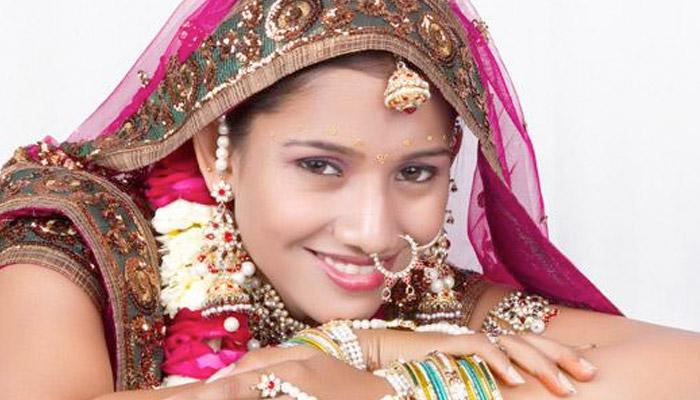About Us
Advertise With Us
RSS Feed | Content Syndication
Terms & Conditions
Privacy Policy
Contact Us
BollywoodShaadis.com © 2025, Red Hot Web Gems (I) Pvt Ltd, All Rights Reserved.

Indian weddings have always been associated with pomp and festivity coupled with numerous ceremonies and rituals. It is also considered to be the time when a couple avows, with the Holy Fire as their witness, to stand by each other through all highs and lows of life.
Though the Indian weddings today are changing rapidly with customisation and personalisation, the traditional approach is still maintained in most of the Indian families. Keeping this in mind, even the first night that the bride and the groom spend together as a newlyweds is also ruled by many traditional stereotypes. Below are five of the stereotypes associated with the traditional Indian suhagraat or first night, most of which are vanished now.
Recommended Read: 4 Blunders to Avoid on Your First Wedding Night
It has been an age-old tradition that the couple’s room be decorated with heavily fragrant, fresh flowers for their suhagraat. It is believed that the sweet, natural fragrance of the flowers creates a romantic mood for the couples to begin the new chapter in their life together. Usually the preferred flowers are rajnigandha (tuberose), roses and jasmines as these have an exotic aroma, and are believed to leave an aphrodisiac effect on the couple.
Not to Miss: How to Decorate the Wedding Night Room of a Newlywed Couple

Suhagraat is also the night where the relatives and friends make fun of the groom, teasing him for his impatience in joining his bride. They do not allow him to leave them till quite late. Even then, the sisters or other younger female relatives of the groom delay him further by putting across their demand, which can be considered like a 'through fare' for going to his room. There is much fun and laughter while the poor groom negotiates with his sisters before reluctantly handing over their gifts. Then the sisters wish him luck and blessings for his new life and let him go.
Don't Miss: Reasons that Will Tempt You to Marry a Mama's Boy
Continue reading below

One of the traditional stereotypes of the suhagraat is that the bride is allowed entry in the room much before the groom. She is allowed some time alone to freshen up. Dressed in the Indian bridal attire, it is a tradition for the bride to cover her face with a ghunghat (veil), and wait for her husband. The groom then comes in the room and unveils the bride. This is also known as the “muh dikhai”, where the groom gifts his bride something special as a memento.
Ladies, Why Don't You Also Think about Showering Your Spouse with a Special Gift on Your Wedding? Here are some Interesting Ideas, Best Wedding Night Gifts for Your Husband
According to certain ancient scriptures and texts, the bride and the groom share a glass of saffron, fennel flavoured, or spiced, milk to replenish their energy, after the tiring wedding rituals. This milk is also considered as an aphrodisiac, which can ensure that the couple enjoy their first night together.
Read Here: Five Common Aphrodisiacs for Your Wedding Night

Here is one of those, age-old popular tradition that has (thankfully) vanished, now. As we all know, Indian traditions place a lot of emphasis on abstaining from pre-marital sex. Earlier on, in many households, a fresh, new white bedsheet was placed on the bed of the newlyweds for their first night, as the soiled bedding and clothes of suhagraat were considered to be the proof of a bride's virginity. Well, good for our society that it realised this to be one of the most absurd (and, disrespectful) things to do to a woman, and soon got rid of this tradition that was filled with half-baked knowledge!
Do Watch: Epic First Night Scene from Bollywood that Just Cannot be Ignored
Now, you know the most popular wedding night traditions that are followed as a part of the wedding customs in India. You might have seen most of them in movies and television, and you know that these are indeed a part of many popular beliefs.
